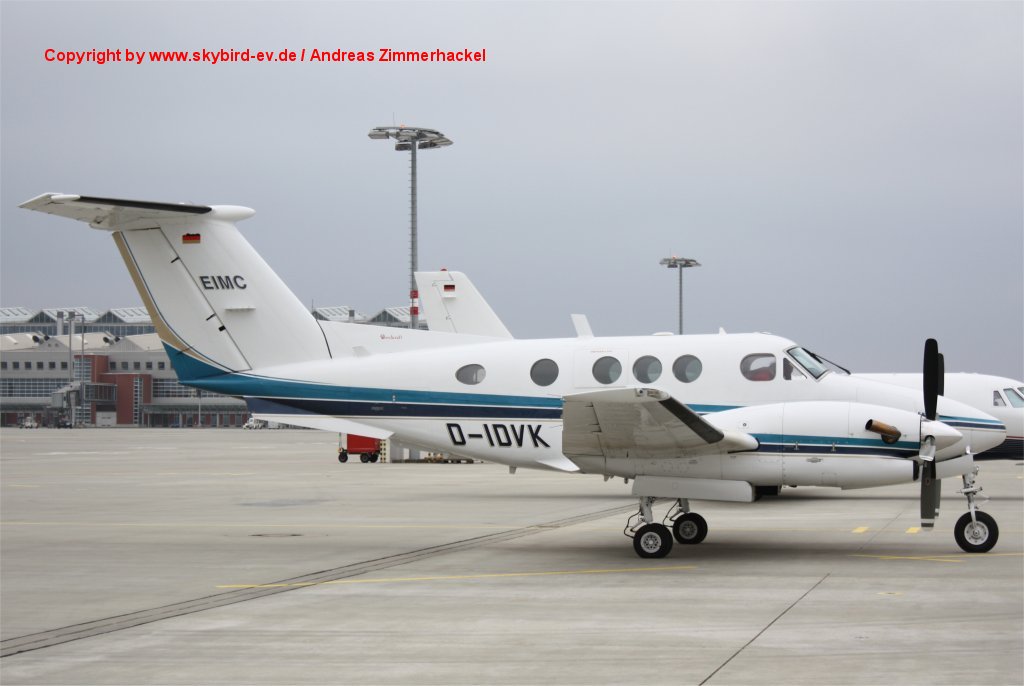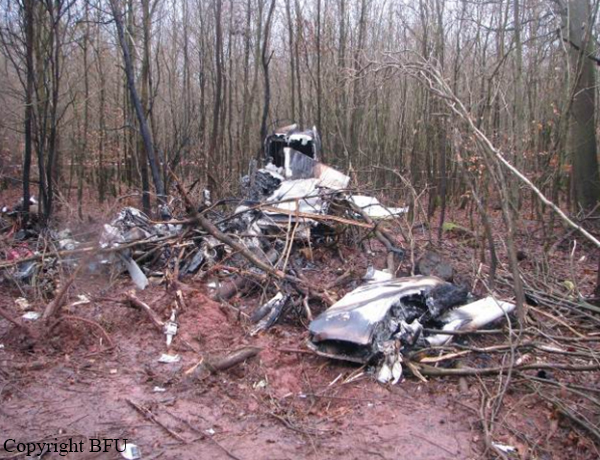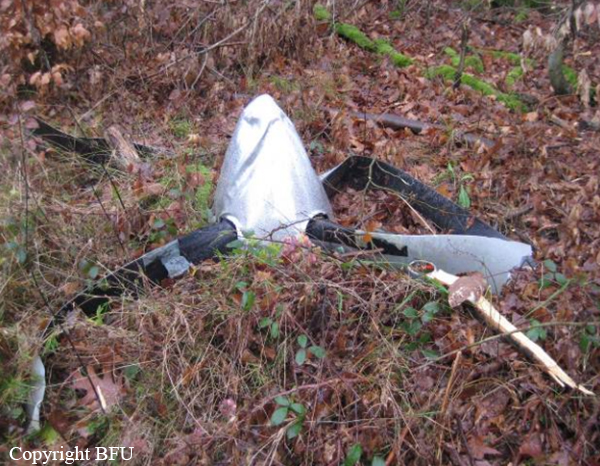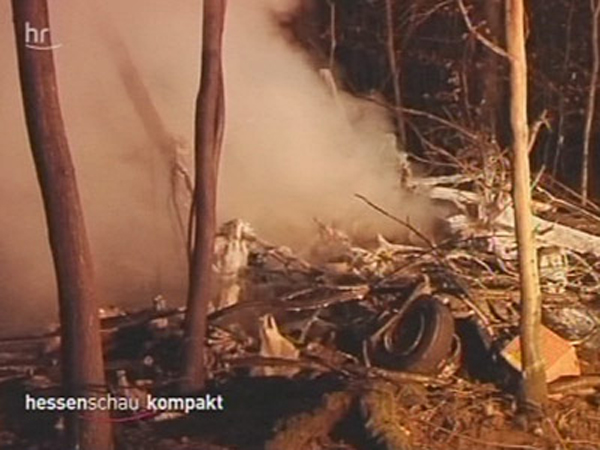Region
Crash of a Cessna 550 Citation Bravo in Reinhardtsdorf-Schöna: 2 killed
Date & Time:
Feb 14, 2010 at 2038 LT
Registration:
OK-ACH
Survivors:
No
Schedule:
Prague - Karlstad
MSN:
550-1111
YOM:
2005
Flight number:
TIE039C
Crew on board:
2
Crew fatalities:
Pax on board:
0
Pax fatalities:
Other fatalities:
Total fatalities:
2
Aircraft flight hours:
1830
Aircraft flight cycles:
1686
Circumstances:
During the early evening, at 1946 hrs, after a flight time of one hour and 50 minutes the airplane came back to Prague, Czech Republic, after a flight to France. For the Pilot in Command (PIC) it was the first flight of the day. The co-pilot left the airplane after the landing and was replaced by the copilot of the subsequent accident flight. The co-pilot had already flown two flights that day - around midday - with a total flight time of one hour and 40 minutes. There were no passengers on board. The aircraft departed Prague at 2008 hrs for a ferry flight to Karlskrona, Sweden. The flight was conducted in accordance with Instrument Flight Rules (IFR). The course of events is described based on the analysis of the recordings of the Flight Data Recorder (FDR), the Cockpit Voice Recorder (CVR), radar and radio communications. The appendix shows two different FDR recording diagrams. Diagram 1 shows the entire flight (time in UTC) and diagram 2 shows the flight from 1918:30 UTC on. Take-off took place on runway 31. The co-pilot was Pilot Flying (PF). The flight was conducted manually, neither of the two autopilots was engaged. From 2012 hrs on, after a right hand turn, the flight proceeded toward the north. The airplane was in climb attitude. At 2014:16 hrs, still in climb, the PIC said "I didn't fly night time for long time". The co-pilot asked: "Have you already experienced a roll during night?" She answered laughing: "Yes, really." He: "Better we won't." She laughing: "Do you enjoy that thing?" Co-pilot: "You are the first one with whom I talked about it, don't tell it [...]." PIC: "Whom shall I not tell?" [...] She again: "I also do it always, but I persuade [...] to do that." Co-pilot: "[...] Bravo does it better." At 2015:00 hrs, during this short conversation, the crew received the instruction from ATC Prague to climb to FL260 and to level off above reporting point DEKOV. The conversation in the cockpit continued. Co-pilot: "Bravo does the roll faster with the ailerons but the spoilers are slower." At 2015:33 hrs ATC repeated the instruction. At 2015:40 hrs the PIC acknowledged the instruction. Between 2017:10 hrs and 2017:20 hrs the airplane rolled about its longitudinal axis; initially to the left up to a bank angle of 30°, and right afterwards to the right up to a bank angle of 20°, then back again to the horizontal. At 2017:20 hrs the PIC responded to it with the words: "Let's go, we are already high enough, you nettle me - come on [...]." At 2017:22rs ATC Prague instructed the crew to contact ATC Munich; at 2017:35 hrs the PIC confirmed the instruction. At 2017:42 hrs she said: "Later but." The co-pilot replied: "Let's do it at higher altitude." At 2018:29 hrs, the PIC contacted ATC Munich. At 2018:36 hrs the crew received the instruction from ATC Munich to climb to FL330. This was confirmed at 2018:44 hrs. Between 2018:51 hrs and 2019:00 hrs the following conversation took place:
- 2018:51 hrs PIC: "Sufficient, is it sufficient?"
- 2018:53 hrs Co-pilot: "For what?"
- 2018:54 hrs PIC: "Sufficient."
- 2018:56 hrs PIC: "The altitude."
- 2018:58 hrs Co-pilot: "For what?"
- 2018:58 hrs PIC: "For that,"
- 2019:00 hrs Co-pilot: "It is sufficient."
At 2019:00 hrs the airplane levelled off in FL270, at 2019:05 hrs the airplane nose moved upward until a pitch angle of about 14° was reached. At 2019:09 hrs the aircraft began to roll about its longitudinal axis to the right. Within 4 seconds the airplane reached the inverted flight attitude and in another 4 seconds it rolled another 90°. Simultaneously the heading changed right toward the east, then toward the south and finally toward the west. During the roll the pitch angle decreased to almost -85° which is almost a vertical nose dive. The computed airspeed increased
significantly. The airplane crashed near Reinhardtsdorf-Schöna, Saxon Switzerland, about 500 m north of the border to the Czech Republic.
- 2018:51 hrs PIC: "Sufficient, is it sufficient?"
- 2018:53 hrs Co-pilot: "For what?"
- 2018:54 hrs PIC: "Sufficient."
- 2018:56 hrs PIC: "The altitude."
- 2018:58 hrs Co-pilot: "For what?"
- 2018:58 hrs PIC: "For that,"
- 2019:00 hrs Co-pilot: "It is sufficient."
At 2019:00 hrs the airplane levelled off in FL270, at 2019:05 hrs the airplane nose moved upward until a pitch angle of about 14° was reached. At 2019:09 hrs the aircraft began to roll about its longitudinal axis to the right. Within 4 seconds the airplane reached the inverted flight attitude and in another 4 seconds it rolled another 90°. Simultaneously the heading changed right toward the east, then toward the south and finally toward the west. During the roll the pitch angle decreased to almost -85° which is almost a vertical nose dive. The computed airspeed increased
significantly. The airplane crashed near Reinhardtsdorf-Schöna, Saxon Switzerland, about 500 m north of the border to the Czech Republic.
Probable cause:
The accident was due to:
- The crew tried to conduct a flight manoeuvre (roll) which is not part of commercial air transport,
- The crew suffered loss of spatial orientation and subsequently did no longer have the ability to recover the flight attitude.
The following factors contributed:
- The pilots were not trained in aerobatics,
- It was night and therefore there were no visual references,
- The relationship between the two pilots resulted in the departure from professional behavior in regard to crew coordination,
- The airplane was neither designed nor certified for aerobatics.
- The crew tried to conduct a flight manoeuvre (roll) which is not part of commercial air transport,
- The crew suffered loss of spatial orientation and subsequently did no longer have the ability to recover the flight attitude.
The following factors contributed:
- The pilots were not trained in aerobatics,
- It was night and therefore there were no visual references,
- The relationship between the two pilots resulted in the departure from professional behavior in regard to crew coordination,
- The airplane was neither designed nor certified for aerobatics.
Final Report:
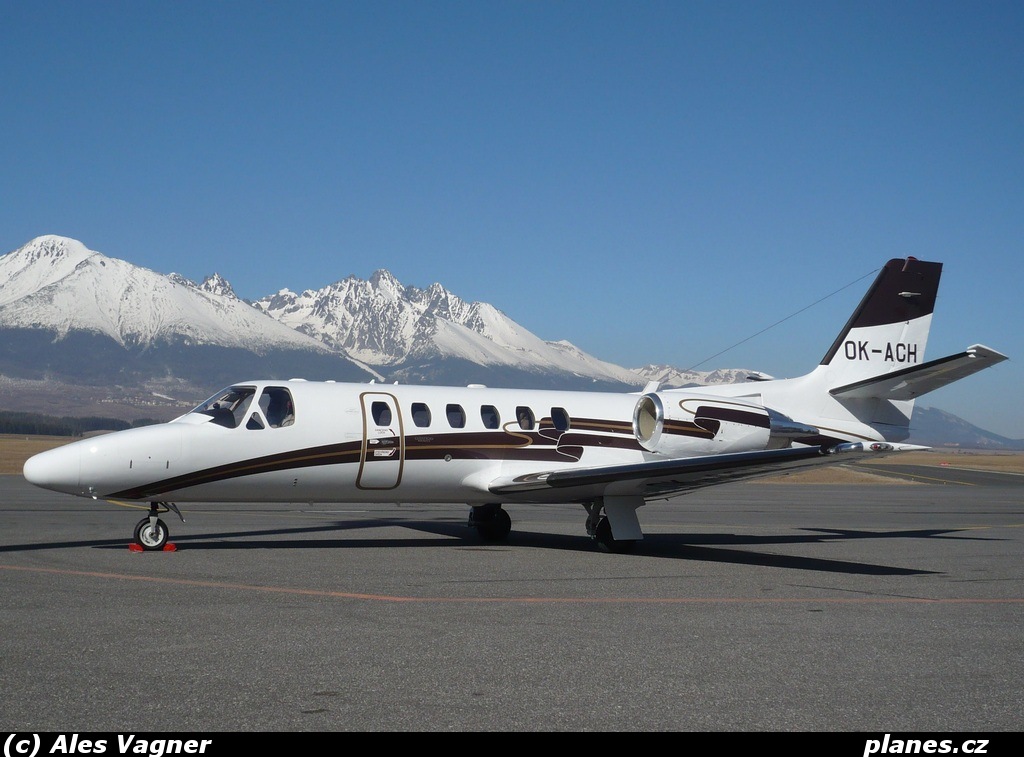
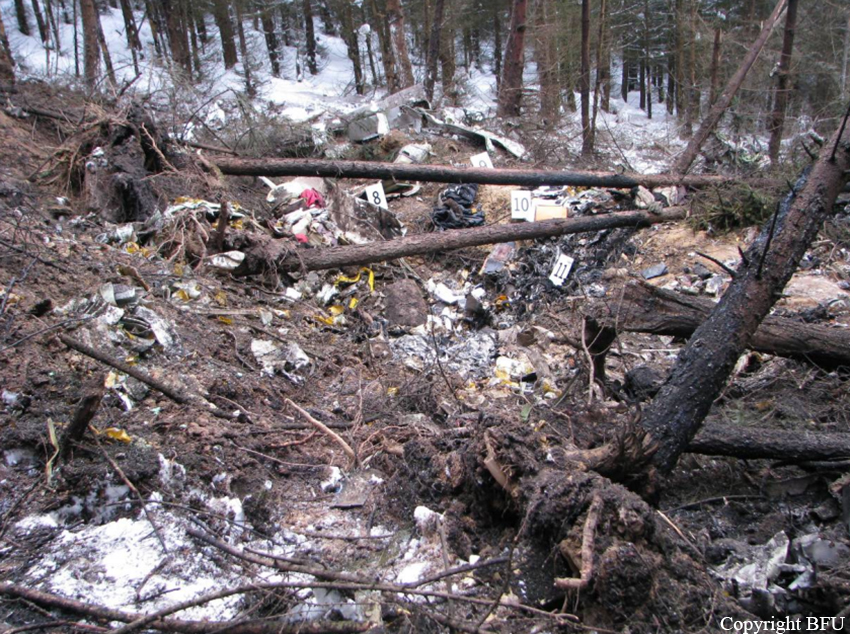

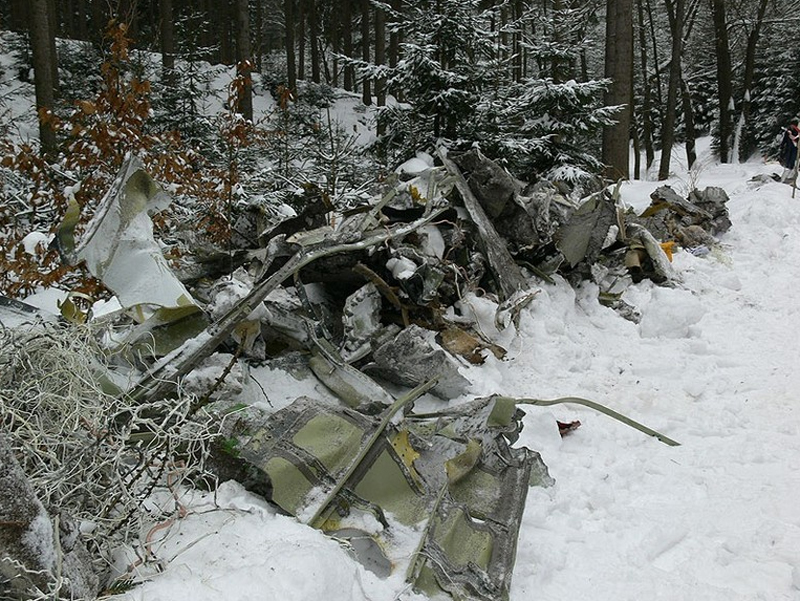
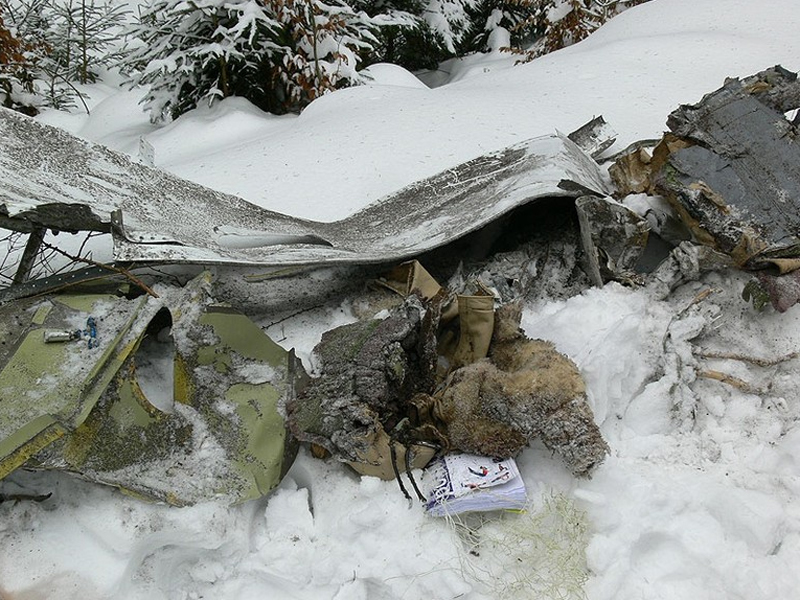
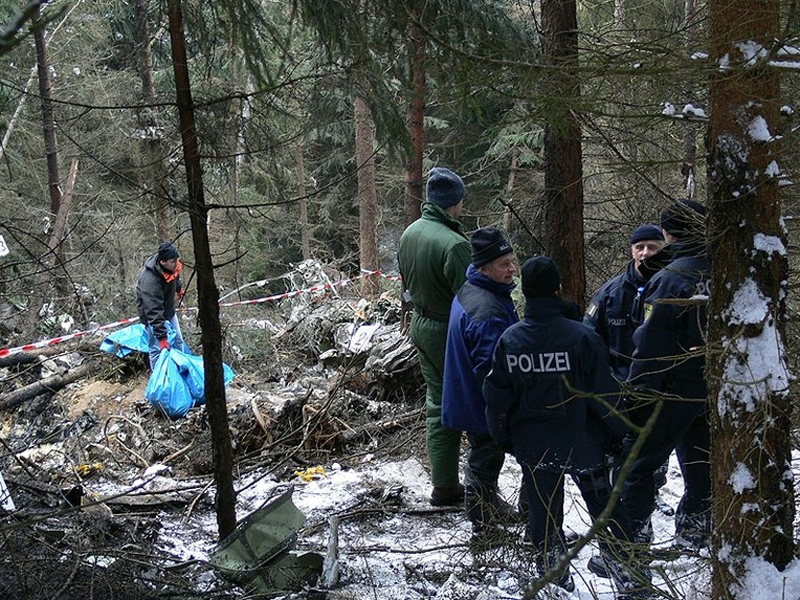
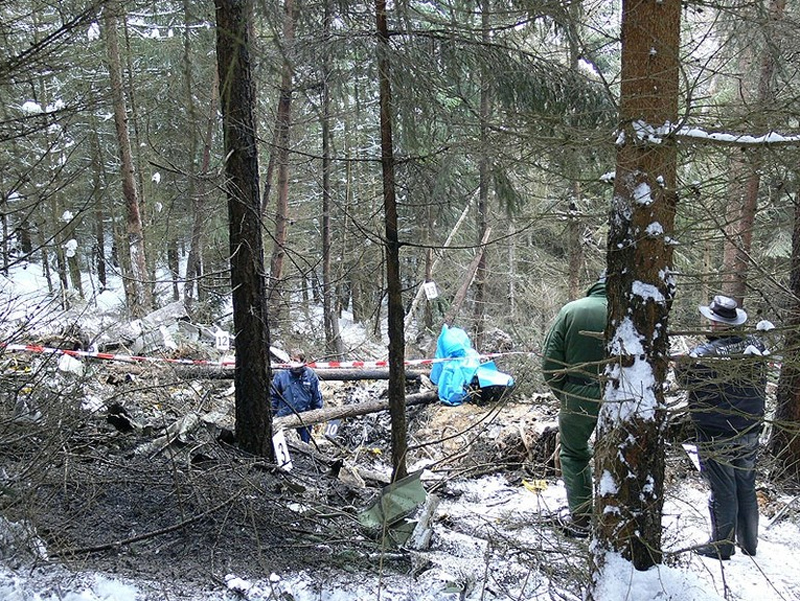
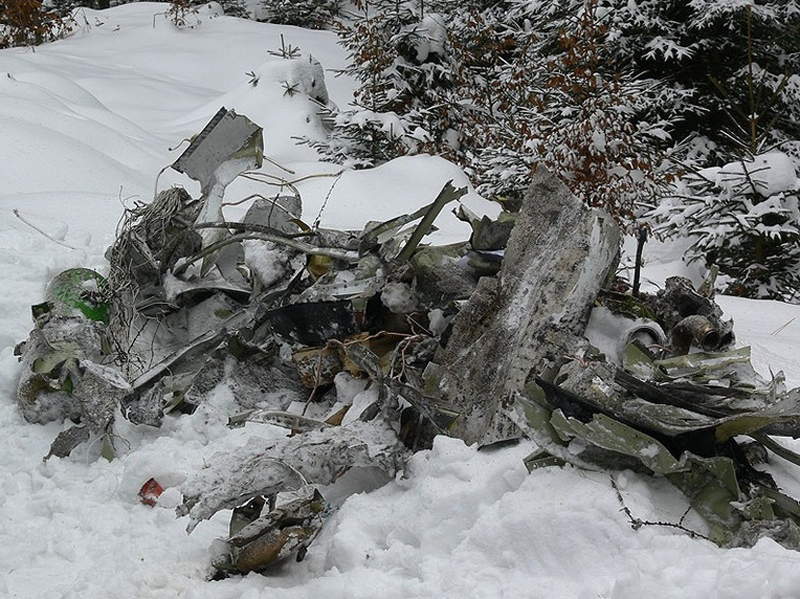
Crash of a Cessna 425 Conquest I in Munich
Date & Time:
Feb 2, 2010 at 0210 LT
Registration:
D-IAWF
Survivors:
Yes
Schedule:
Hanover - Munich
MSN:
425-0222
YOM:
1985
Crew on board:
2
Crew fatalities:
Pax on board:
0
Pax fatalities:
Other fatalities:
Total fatalities:
0
Captain / Total hours on type:
400.00
Copilot / Total hours on type:
300
Aircraft flight hours:
5836
Aircraft flight cycles:
4376
Circumstances:
The aircraft took off at 0041 hrs from Hanover (EDDV) for a positioning flight to Munich (EDDM) with a crew of two pilots. The intention was to make a subsequent air ambulance flight from Munich to Kiel. During the climb the crew received the instruction for a direct flight to Munich and the clearance for a climb to Flight Level (FL) 230. The radar data showed that the aircraft turned south-east and climbed to FL230 after take-off. At 0123:45 hrs the crew made radio contact with Munich Radar. About five minutes later, the controller advised the crew that both runways were closed for snow removal, but that the southern runway would re-open in about 25-30 minutes. In response, the crew advised they would reduce the speed somewhat. The crew stated that the temperature in flight altitude had been -40 °C. At 0133:58 hrs the controller issued descent clearance to FL110. According to crew statements in this phase there were problems with the left engine. A system check indicated that the engine’s Interstage Turbine Temperature (ITT) had exceeded 900°C and the torque had reduced to zero. The crew then first worked through the memory items before "beginning with the engine failure checklist". In the presence of the BFU the crew gave their reasons for the shut-off of the engine as being the fast increase of the ITT and the decrease of the torque to zero. The crew could not give any other engine parameters like Ng per cent RPM, propeller RPM, fuel flow, oil pressure or oil temperature. The co-pilot reported via radio: "… we request to maintain FL150 … we have engine failure on the left side, call you back." At that time, the radar data showed the aircraft at FL214. As the controller asked at 0138:15 hrs if a frequency change to approach control were possible, the co-pilot answered: "... give us a minute, please, and then we report back, until we have everything secured ..." At 0143:22 hrs the co-pilot advised the controller that the engine had been "secured" and a frequency change was now possible. The crew subsequently reported that, three to five minutes later there had been brief, strong vibrations in the right engine. The crew could not state which actions they had carried out after the descent clearance and during shut-off and securing of the left engine. Both pilots stated that there was no attempt to re-start the left engine. After changing frequency to Munich Approach Control the crew was advised that runway 26L was available. The co-pilot declared emergency at 0143:48 hrs, about 25 NM away from the airport of destination, mentioning again the failure of the left engine. The controller responded by asking the crew what assistance they would require, and asked if a ten-mile approach would be acceptable. This was affirmed. At 0149:28 hrs the controller gave clearance for an ILS approach to runway 26L. At that time the radar data showed the airplane in FL78 flying with a ground speed of 210 kt to the south-east. The aircraft turned right towards the final approach and at 0151:53 hrs it reached the extended runway centre line about 17 NM prior to the runway threshold in 5,400 ft AMSL with a ground speed of 120 kt. At 0154:12 hrs the controller said: "… observe you a quarter mile south of the centre line." According to the radar data the aircraft was in 5,000 ft AMSL with a ground speed of 90 kt at that time. The co-pilot answered: "Ja, we are intercepting…". Twenty seconds later the controller gave clearance to land on runway 26L. Up until about 0157:30 hrs the ground speed varied between 80 and 90 kt. From 0157:43 hrs on, within about 80 seconds, the speed increased from 100 kt to 120 kt. Thereby, the airplane had come within 5.5 NM of the threshold of runway 26L. Up until 0200:53 hrs the airplane flew with a ground speed of 100 - 110 kt. At 0201:32 hrs ground speed decreased to 80 kt. At that time, the airplane was in 1,900 ft AMSL and about 1.5 NM away from the threshold. Up until the last radar recording at 0202:27 hrs the ground speed remained at 80 kt. The crew stated the approach was flown with Blue Line Speed. During the final approach the aircraft veered slightly to the left and tended to sink below the glidepath. Approximately 3 NM from the threshold the approach lights had become visible and the flaps and the landing gear were extended. Then the airplane veered to the left and sank below the glidepath. The co-pilot stated a decision for a go-around was made. When an attempt was made to increase power from the right engine, no additional power was available. The aircraft had lost speed and to counteract it the elevator control horn was pushed. Prior to the landing, rescue and fire fighting vehicles were positioned at readiness in the vicinity of the airport’s southern fire station. The weather was described as very windy with a light snow flurry. The fire fighters subsequently reported they had seen two white landing lights and the dim outline of an approaching aircraft. The aircraft’s bank attitude was seen to alter a number of times. Shortly before landing, the landing lights suddenly disappeared and the aircraft was no longer visible. The aircraft impacted the ground about 100 metres prior to the threshold of runway 26L. The crew turned off all the electrical systems and left the aircraft unaided. During the initial interviews by BFU and police the co-pilot repeatedly talked about a go-around the crew had intended and he had, therefore, pushed the power lever for the right engine forward. In later statements he stated that the engine power was to be increased. A few days after the accident, the BFU asked both pilots for a detailed written statement concerning the course of events. The BFU received documents with a short description of the accident in note form. The statements of the two pilots were almost identical in content and format.
Probable cause:
The following findings were identified:
- When the left engine was shut down, the propeller was not feathered,
- During the final approach, the speed for an approach with one shut-off engine was lower than the reference speed,
- The airplane veered to the left during power increase and became uncontrollable due to the lack of rudder effectiveness,
- Non-adherence to checklists during the shut-off of the engine and,
- Poor crew coordination.
- When the left engine was shut down, the propeller was not feathered,
- During the final approach, the speed for an approach with one shut-off engine was lower than the reference speed,
- The airplane veered to the left during power increase and became uncontrollable due to the lack of rudder effectiveness,
- Non-adherence to checklists during the shut-off of the engine and,
- Poor crew coordination.
Final Report:

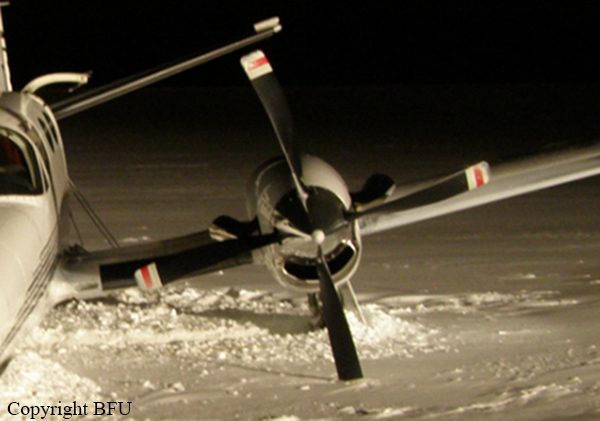

Crash of a Beechcraft F90 King Air in Egelsbach: 3 killed
Date & Time:
Dec 7, 2009 at 1616 LT
Registration:
D-IDVK
Survivors:
No
Schedule:
Bremen - Egelsbach
MSN:
LA-96
YOM:
1981
Crew on board:
1
Crew fatalities:
Pax on board:
2
Pax fatalities:
Other fatalities:
Total fatalities:
3
Aircraft flight hours:
6069
Aircraft flight cycles:
5353
Circumstances:
On a flight from Bremen (EDDW) to Frankfurt-Egelsbach (EDFE), a Beechcraft King Air (F90) changed from IFR to VFR rules prior to the final approach, during which it collided with trees, crashing in a wood and catching fire. On board were the pilot and two passengers. The right hand cockpit seat was occupied by a passenger who conducted radio communications. The approach to runway 27 at EDFE was chosen and executed via the so-called High Performance Aircraft Approach (HPA-approach) as published in the Aeronautical Information Publication (AIP). From 1558 hrs onwards the aircraft was under control by Langen Radar (120.8 MHz), and radar contact was confirmed by the controller. After about six minutes the controller issued the instruction: “[call sign], report if able to cancel IFR”. Subsequently, further instructions were issued to descend to altitude 5,000 ft on QNH 1,012 hPa and fly towards Egelsbach entry point Hotel 1. About four minutes later the controller gave instructions to descend to 4,000 ft, then 3,000 ft. Simultaneously, clearance was given to fly from entry point Hotel 1 to Hotel 2 and then Hotel 3. When overhead entry point Hotel 2 at 1613 hrs, the King Air reported flight conditions as ‘Victor Mike Charlie’ (VMC – Visual Meteorological Conditions) and the switch to VFR (Visual Flight Rules). At this time, the radar recorded the aircraft’s ground speed as about 180 kt. Langen Radar confirmed the report and gave an instruction to continue the descent and report passing 1,500 ft. About 42 seconds later the pilot was instructed to contact Egelsbach Info (130.9 MHz). The radar trace indicated that at this time the aircraft was at an altitude of about 1,800 ft and about 5.5 NM from the airfield. The ground speed was about 180 kt. The first radio call from the Beech to Egelsbach Info took place about 15 seconds later at 1615:06 hrs, at an altitude of about 1,500 ft and ground speed of about 190 kt. Egelsbach Info gave the information that the aircraft was north of the approach centreline and asked for a course correction to the left. They further reported the wind as Easterly at 4 knots with Runway 27 in use. After the response “[call sign], thank you” Egelsbach Info responded: “lights and flashes are on“. During the subsequent approach, the aircraft ground speed reduced over a distance of about 1.3 NM from about 190 kt to about 130 kt (distance to aerodrome about 3 NM). The radar trace indicates that from a position of 3.7 NM from the aerodrome to 2.5 NM from the aerodrome, the aircraft descended from 1,500 ft to 1,000 ft.At about 1616:03 hrs Egelsbach Info advised: “[…]coming up onto centreline”. This was acknowledged with “[call sign]”, following which Egelsbach Info advised: “you are now on centreline”. This was acknowledged with “thank you very much“. The radar trace indicates that at this time the aircraft descended from 900 ft to 800 ft. When Egelsbach Info advised “check your altitude”, the aircraft was at an altitude of about 800 ft. After a further two seconds, at 1616:18 hrs, the radar data indicated the aircraft height as about 700 ft; there was no more indication on the radar screen afterwards. In this area, the terrain is about 620 ft, with trees extending to about 700 ft AMSL. At 1616:24 hrs the aircraft was requested by Egelsbach Info to alter course slightly to the right. Neither a reply was received to this request nor to a subsequent transmission from Egelsbach Info about 22 seconds later. Egelsbach Info assumed there had been a crash and alerted the emergency services, the first of which arrived at the accident site at about 1638 hrs and found a burning wreck.
Probable cause:
The accident was caused by the descent during final approach which led into a fog layer and obstacles.
Contributing factors were:
- A too high descent rate
- An impaired performance and an insufficient situational awareness favored by the intake of alcohol
- That no visual contact with the PAPI or airfield was established
- That the on-board aids to navigation were not or not sufficiently used.
Contributing factors were:
- A too high descent rate
- An impaired performance and an insufficient situational awareness favored by the intake of alcohol
- That no visual contact with the PAPI or airfield was established
- That the on-board aids to navigation were not or not sufficiently used.
Final Report:
